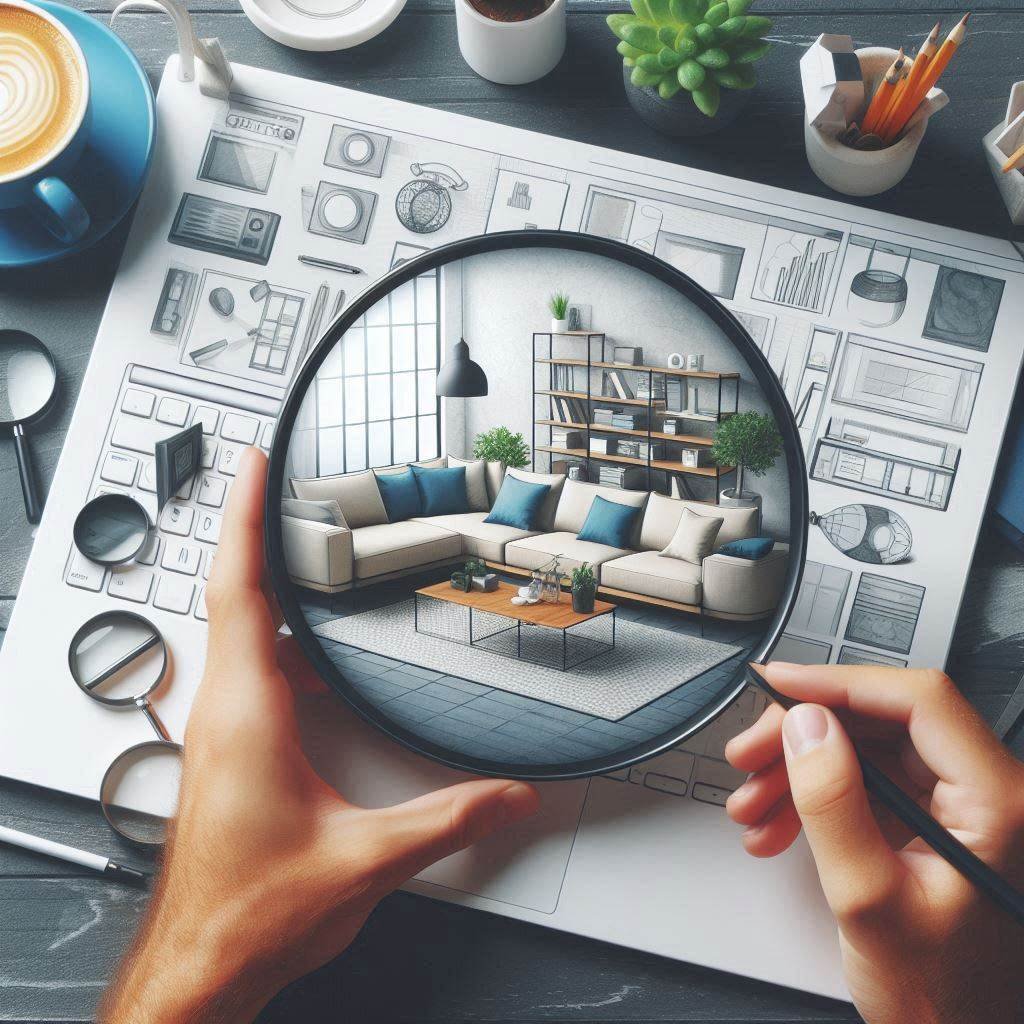Are you dreaming of transforming spaces and bringing design visions to life? Are you dreaming for Interior Design Programs Toronto ? If so, you’re in the right place! Toronto, with its vibrant arts scene and diverse architectural landscape, is a hub for aspiring interior designers. In this comprehensive guide, we’ll dive deep into the world of interior design programs in Toronto, helping you navigate your path to a fulfilling creative career.
Why Toronto is the Perfect Place to Study Interior Design
Before we explore the programs, let’s talk about why Toronto is an exceptional choice for your interior design education. As someone who’s lived and breathed the design scene in this city, I can tell you it’s truly unique.
Toronto’s multiculturalism isn’t just a buzzword – it’s a living, breathing influence on our design landscape. Walk down Queen West, and you’ll see how global influences blend seamlessly with local aesthetics. This diversity isn’t just inspiring; it’s a crucial element that will shape your design perspective.
The city is also home to some of the most innovative architecture in North America. From the Royal Ontario Museum’s crystal addition to the Aga Khan Museum’s stunning modernist design, you’re surrounded by inspiration at every turn. As a student, you’ll have these world-class examples of design right at your fingertips.
But it’s not all about the big names. Toronto’s design scene thrives on its grassroots movement too. The city hosts numerous design events throughout the year, from the Interior Design Show to smaller, community-led exhibitions. These events are gold mines for networking and inspiration – trust me, I’ve found some of my best collaborators at these gatherings!
Top Interior Design Programs in Toronto
Now, let’s get to the heart of the matter – the programs that will shape your future in interior design. I’ve had the pleasure of interacting with graduates and faculty from these institutions, and each has its unique strengths.
1. Ryerson University – School of Interior Design
Ryerson’s program is a heavyweight in the Toronto design scene, and for good reason. Their four-year Bachelor of Interior Design (BID) program is known for its comprehensive approach and innovation.
Key Features:
- CIDA (Council for Interior Design Accreditation) accredited program
- Strong focus on sustainable design practices
- State-of-the-art facilities and technology
- Opportunities for internships and industry partnerships
What sets Ryerson apart is its emphasis on sustainable design. In today’s world, this isn’t just a nice-to-have – it’s essential. The program’s focus on eco-friendly practices will give you a significant edge in the job market.
Learn more about Ryerson’s Interior Design program
2. Humber College – Bachelor of Interior Design
Humber’s program is all about hands-on learning. If you’re someone who learns best by doing, this might be the perfect fit for you.
Key Features:
- CIDA accredited program
- Strong industry connections
- Focus on both residential and commercial design
- Emphasis on sustainable and universal design principles
What I love about Humber’s program is its balance between residential and commercial design. This broad exposure ensures you’re well-prepared for various career paths post-graduation.
Explore Humber’s Interior Design program
3. OCAD University – Environmental Design (Interior Design Specialization)
OCAD U’s program takes a unique, interdisciplinary approach to interior design. If you’re interested in pushing the boundaries of what interior design can be, this program might be your calling.
Key Features:
- Emphasis on sustainable and inclusive design
- Interdisciplinary approach
- Strong focus on conceptual thinking and problem-solving
- Opportunities for international exchange programs
The interdisciplinary nature of this program is its standout feature. By blending elements of interior design, architecture, and industrial design, OCAD U prepares you to think outside the box – a crucial skill in today’s design world.
Discover OCAD U’s Environmental Design program
4. Sheridan College – Bachelor of Interior Design
Sheridan’s program is known for its practical, industry-focused approach. If you’re eager to hit the ground running in your career, this program offers excellent preparation.
Key Features:
- CIDA accredited program
- Strong emphasis on digital design and visualization tools
- Opportunities for co-op placements
- Focus on both residential and commercial design
Sheridan’s emphasis on digital design tools is particularly valuable. In my experience, proficiency with the latest design software can set you apart in job interviews and client presentations.
Learn about Sheridan’s Interior Design program
What You’ll Learn: Curriculum Deep Dive
Now that we’ve covered the top programs, let’s explore what you’ll actually be studying. Interior design education is a rich blend of creative and technical skills, and Toronto’s programs reflect this balance.
1. Design Theory and History
You’ll dive into the philosophical underpinnings of design and explore how historical styles influence contemporary practices. This knowledge will inform your design decisions and help you create spaces that resonate on a deeper level.
2. Space Planning and Programming
This is where you’ll learn to make the most of every square foot. You’ll master the art of creating functional, efficient layouts that meet your clients’ needs while adhering to building codes and regulations.
3. Color Theory and Application
Color can make or break a design. You’ll learn how to use color to create mood, enhance spatial perception, and complement architectural features.
4. Materials and Finishes
From luxurious textiles to innovative sustainable materials, you’ll explore a wide range of options for every surface in your designs. You’ll learn how to select materials based on aesthetics, durability, sustainability, and budget.
5. Lighting Design
Lighting is a crucial yet often overlooked aspect of interior design. You’ll learn how to use both natural and artificial light to enhance your designs and create the desired ambiance.
6. Computer-Aided Design (CAD) and 3D Modeling
In today’s digital age, proficiency in design software is non-negotiable. You’ll master industry-standard tools like AutoCAD, SketchUp, and Revit, allowing you to bring your designs to life in stunning detail.
7. Sustainable Design Practices
Sustainability isn’t just a trend – it’s the future of design. You’ll learn how to create beautiful spaces that are also environmentally responsible, from selecting eco-friendly materials to designing for energy efficiency.
8. Building Codes and Regulations
While perhaps not the most exciting topic, understanding building codes is crucial for creating safe, legal designs. You’ll learn how to navigate these regulations while still maintaining your creative vision.
9. Professional Practice and Ethics
Beyond design skills, you’ll also learn how to run a successful design business. This includes project management, client relations, and ethical considerations in the design industry.
10. Internships and Real-World Experience
Many programs incorporate internships or co-op placements. These experiences are invaluable, allowing you to apply your skills in real-world settings and build your professional network before graduation.
Launching Your Career: Job Opportunities for Interior Design Graduates
One of the most exciting aspects of studying interior design is the variety of career paths available to you after graduation. Here are some potential routes you might consider:
- Residential Interior Designer: Create beautiful, functional homes for private clients.
- Commercial Interior Designer: Design spaces for businesses, from offices to retail stores.
- Hospitality Designer: Craft inviting environments for hotels, restaurants, and other hospitality venues.
- Healthcare Designer: Design healing spaces in hospitals, clinics, and other healthcare facilities.
- Retail Designer: Create engaging shopping experiences through innovative store designs.
- Sustainable Design Consultant: Specialize in eco-friendly design solutions.
- Architectural Technologist: Work alongside architects to bring designs to life.
- Design Project Manager: Oversee interior design projects from concept to completion.
- Visual Merchandiser: Create eye-catching displays for retail environments.
- Furniture Designer: Design custom furniture pieces or work for furniture manufacturers.
The job market for interior designers in Toronto is competitive but growing. Many graduates start their careers with established design firms, while others choose to freelance or start their own design businesses after gaining some industry experience.
Getting In: Admission Requirements and Application Process
Excited about the possibilities? Great! Now let’s talk about how to get into these programs. While requirements vary by institution, here’s a general overview of what you’ll need:
- High school diploma or equivalent: Most programs require a minimum average grade, typically around 70-75%.
- Portfolio: This is often the most crucial part of your application. Your portfolio should showcase your creativity, technical skills, and potential as a designer. Include a variety of work that demonstrates your ability to think spatially and your understanding of color, composition, and form.
- Letter of intent or personal statement: Use this opportunity to express your passion for design and your career goals.
- Interview: Some programs require an interview as part of the admission process. This is your chance to elaborate on your portfolio and demonstrate your enthusiasm for the field.
- English language proficiency: If English isn’t your first language, you may need to provide proof of proficiency through tests like IELTS or TOEFL.
Pro tip: Start preparing your application materials early, especially your portfolio. Consider taking art or design classes to strengthen your skills and add to your portfolio. Remember, your portfolio should tell a story about who you are as a designer and what you can bring to the program.
Financing Your Design Dreams
Let’s talk about the elephant in the room – financing your education. While pursuing an interior design degree is an investment, there are various financial aid options available:
- Scholarships: Many institutions offer scholarships specifically for design students. Research and apply for these early – competition can be fierce!
- Student Loans: Government loans like the Ontario Student Assistance Program (OSAP) can help cover tuition and living expenses.
- Work-Study Programs: Many universities offer on-campus jobs that can help offset your expenses while providing valuable work experience.
- Bursaries: These need-based grants are often available through individual institutions or external organizations.
- Part-Time Work: Consider part-time jobs in design-related fields, like furniture stores or design studios, to earn money and gain relevant experience.
Remember, your education is an investment in your future. While the costs may seem daunting, the skills and connections you’ll gain can lead to a rewarding, well-paying career in the long run.
Building Your Design Empire: Portfolio and Networking
In the world of interior design, your portfolio and professional network are your most valuable assets. Here’s how to start building both while you’re still in school:
Crafting a Stellar Portfolio
- Quality over quantity: Include your best work, not everything you’ve ever done.
- Show your process: Include sketches and development work alongside final designs.
- Diversify: Showcase a range of projects to demonstrate your versatility.
- Keep it updated: Regularly add new projects and remove older work as your skills improve.
- Make it accessible: Consider creating an online portfolio in addition to a physical one.
Networking Like a Pro
- Attend industry events: Design conferences, workshops, and local meetups are great places to connect with professionals and fellow students.
- Join professional organizations: Consider student memberships in organizations like the Association of Registered Interior Designers of Ontario (ARIDO) or the Interior Designers of Canada (IDC).
- Leverage social media: Platforms like Instagram and LinkedIn can be powerful tools for showcasing your work and connecting with other designers.
- Seek internships: Even short-term or part-time internships can provide valuable connections and experience.
- Engage with your professors: They often have extensive industry connections and can provide mentorship beyond the classroom.
Remember, networking isn’t about collecting business cards – it’s about building genuine relationships. Be curious, ask questions, and always be ready to learn from others in the field.
Staying Ahead: Continuing Education and Professional Development
The world of design is constantly evolving, and staying current is key to a successful career. Here are some ways to keep your skills sharp after graduation:
- Certification Programs: Pursue additional certifications, such as LEED (Leadership in Energy and Environmental Design) accreditation, to enhance your expertise in specific areas.
- Graduate Studies: Consider a master’s degree in interior design or a related field to deepen your knowledge and specialize in a particular area.
- Workshops and Seminars: Attend industry workshops to stay up-to-date with the latest design trends and technologies.
- Online Courses: Platforms like Coursera and LinkedIn Learning offer courses on everything from advanced 3D modeling to business skills for designers.
- Design Competitions: Participating in design competitions can push your creativity and keep your skills sharp.
Remember, learning doesn’t stop when you graduate. The most successful designers are those who remain curious and continue to evolve throughout their careers.
The Future of Interior Design in Toronto
As we look to the future, several exciting trends are shaping the interior design landscape in Toronto:
- Sustainable Design: There’s a growing demand for eco-friendly materials and energy-efficient design solutions. Toronto’s commitment to reducing its carbon footprint is driving this trend in both residential and commercial design.
- Technology Integration: From virtual reality design presentations to smart home technologies, the line between technology and interior design is blurring. Toronto’s thriving tech scene is fueling innovation in this area.
- Wellness-Focused Design: In the wake of the global pandemic, there’s an increased focus on creating spaces that promote physical and mental well-being. This trend is particularly evident in workplace design as companies reimagine office spaces for the post-pandemic world.
- Flexible Spaces: With the rise of remote work and multi-functional living, there’s a growing demand for adaptable design solutions. Toronto’s condo boom is driving innovation in small space design.
- Cultural Fusion: Toronto’s multicultural landscape continues to influence design aesthetics, leading to more diverse and globally inspired interiors. This fusion of styles is creating a uniquely Toronto design language.
As an aspiring designer in Toronto, you’re entering the field at an exciting time. These trends offer countless opportunities for innovation and creativity in your future career.
Making Your Choice: Factors to Consider
With so many great options, how do you choose the right program for you? Here are some factors to consider:
- Accreditation: CIDA accreditation ensures the program meets industry standards and can be important for future licensing.
- Curriculum: Look for a balance of creative and technical courses that align with your interests and career goals.
- Faculty: Research the backgrounds of faculty members. Are they active in the industry? Do their specialties align with your interests?
- Facilities: State-of-the-art design studios and computer labs can enhance your learning experience.
- Industry Connections: Programs with strong industry ties can provide valuable internship and networking opportunities.
- Location: Consider the design scene in the area surrounding the school. Toronto offers a wealth of design inspiration, from its diverse neighborhoods to its world-class museums and galleries.
- Class Size: Smaller classes often mean more individual attention from instructors.
- Cost: While it shouldn’t be the only factor, consider the total cost of the program, including tuition, materials, and living expenses.
- Your Learning Style: Do you thrive in a structured environment, or do you prefer more independent, project-based learning? Different programs cater to different learning styles.















